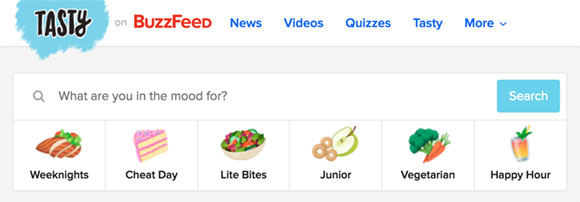French Toast And How Tasty Is Forging Ahead With Social Video
Sahail Ashraf posted on 5 April 2017
If there is one thing that any digital agency will agree on, it’s that ‘breaking through the noise’ is a major concern in social media. There is so much good stuff out there (and all the good stuff that copies the good stuff), that it is a challenge to disrupt, to be different. But some manage it.
Every now and then we see this, and we like to celebrate it.
To see how Tasty has basically risen above the competition, you have to understand the scale of the achievement. Only then do you appreciate the incredibly creative and inspiring work it has done in such a short space of time.
Turn on the TV now and probably 50% of what you watch (at least in the daytime programming schedule) is all about cooking. There are hundreds of magazines on the subject. Add the ‘foodie’ websites and blogs too that are basically too numerous to mention. But Tasty has managed to carve out its own niche, and in a pretty impressive way.

But let’s talk about Buzzfeed first…
Buzzfeed is a famous (and sometimes maligned) news platform. It is fun, quick and often controversial, but anyone who has viewed content on there will agree that it is very well put together. It has its own style, and it is proud of it. If you spend too much time on Buzzfeed there is probably something significantly wrong with your life, but it’s popular. And a huge chunk of its traffic has come from social media.
In other words, it has conquered the Web, and with over 75% of the traffic coming via social media, it is doing very well, thank you.

Tasty is not old. It has been around for a year or so, but this hasn’t stopped it from becoming incredibly popular. How popular? This ‘channel’ attracts over 500 million views every month. That’s a huge amount, even by today’s standards on social media. It has also garnered over 15 million likes. Likes may not be the best indicator of the size of an audience any more, but the numbers do add up to a sensation, rather than a fad.
How Tasty won
As stated earlier, food is hugely popular on TV and online. People love watching shows about it, and they love following chefs and their shows online. It’s big business. But Tasty has managed to be innovative, even in an arena that has been ‘done to death’.
Let’s look at how Tasty works, and how it has consequently captured the foodie hearts of millions. Firstly, it messes around with the standard features of food shows and food magazines. Watch a food show on TV and you’ll see, at some point, a lovingly detailed explanation of the process of cooking a dish, with close ups and shots of the chef and so on. This has become the norm ever since the birth of the celebrity chef.
When Buzzfeed launched Tasty back in 2015, what they didn’t do is ‘what everyone else was doing’. Instead, they worked on a system whereby dishes were prepared in under 90 seconds.

How so? Well, and this may not surprise those of you who ‘know’ how video on Facebook works, Tasty is full of captions. This means plenty of text that explains stuff, rather than a chef showing off their latest haircut. It’s quick, it’s to the point and it’s about the food. Perhaps even more importantly, it’s something that can be digested (sorry) quickly.
Now this is important. Video on Facebook for example, if it’s created by successful agencies and brands, is most likely to be content that can be viewed with the sound off.
In fact, chances are that when you are on Facebook, you don’t click on the videos. They play anyway, but just without sound. Marketers know that the silent video that grabs the attention of the user within three seconds is the video that wins.
French Toast
Okay, you may not know how to make French toast. Some people don’t. But anyone who is in the dark on French Toast will be enlightened after watching this Tasty video.
It actually breaks the original rule by lasting longer than 90 seconds. But notice how it uses captions when it has to present anything even remotely technical or complicated.
This is a vital aspect of creating video that works with short attention spans. And with video on Facebook being the go-to source for most people online, it works a treat.
There’s no filler. It’s short, and because it gives you a uniquely visual experience, with viewers shown rather than told what to do, it is perfect for anyone who is skimming through their Facebook feed.
Lessons? Sound is second to image
Don’t be like everyone else.
Look at what is happening in your field, or your client’s field, and modify it a little. If you’re going to use video on Facebook (or any social platform) realise that it is always going to be a visual medium first and foremost. It’s literally about moving pictures, sound comes a distinct second in social media. We can’t see that changing very soon.
Unconvinced? Watch any Tasty video with the sound off. It will not affect your understanding and appreciation of their work in the slightest.
If you’re struggling to show clients the fruit of your work on social, consider a free trial of LocoWise. It’s amazing when it comes to metrics. And it makes your agency look good, real good.




